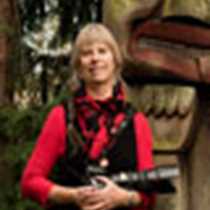The Sea Lion had remained at anchor throughout the evening just off of Punta Entrada, located at the southern end of Isla Magdalena. Our natural history staff was out on the forward deck by 6:30 a.m. looking for whales. As the sun began to rise and fill Bahia Magdalena with early morning light we could see the short round blows of many gray whales. Anticipation was high, not just within the natural history staff but also every eager guest who wanted to have this rare experience of Zodiac rides amongst gray whales.
As the morning light increased, the naturalists continued to scan the surrounding waters and the nearby shoreline. Carol, Steve, Gracia, Michele and Sharon all noticed the unusual bright, red-orange color literally covering two nearby beaches. What is that? They had also noticed huge flocks of gulls on the beaches and feeding just offshore.
Soon a Zodiac filled with natural history staff went ashore to inspect the unusual but pleasing color encrusting the beaches. After inspecting and photographing what turned out to be thousands of pelagic red crabs stranded by the high tide the naturalists returned to the Sea Lion bearing crab samples and stories of feeding birds and an extremely aromatic beach!
The pelagic red crab (Pleuroncodes planipes) is an open-ocean dwelling crab occasionally brought near-shore by winds and ocean currents. Observers on board research vessels have estimated some swarms to number more than 200 billion crabs! Gray whales have also been observed swimming against tidal currents amongst clouds of red crabs; their mouths open in what may be a chance feeding opportunity too good to pass up.
Zodiacs were deployed from the Sea Lion and soon all guests and naturalists were moving and drifting among at least fifty gray whales and thousands of pelagic red crabs. As whales continued to fluke all around us, we could only guess that these magnificent marine mammals were indeed opportunistically feeding upon this gift from the sea.




